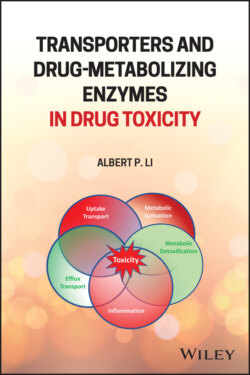Читать книгу Transporters and Drug-Metabolizing Enzymes in Drug Toxicity - Albert P. Li - Страница 75
3.8.1 Drug Metabolism and Toxicity
ОглавлениеAs for most marketed drugs that are found to be associated with idiosyncratic liver toxicity, Sitaxentan has been extensively evaluated in preclinical safety tests in multiple animal species, including single‐ and multiple‐dose studies in mice, rats, and dogs. Preclinical findings were non‐remarkable. While signs of liver toxicity including liver hypertrophy were observed, the preclinical safety study results show that Sitaxentan has acceptable safety margins [158].
As of this writing, there is only one study on the metabolic fate of Sitaxentan. Using in vitro hepatic experimental systems including human hepatocytes, human liver microsomes, and complementary DNA (cDNA) expressed microsomes, the 1,3‐benzodioxole ring of Sitaxentan is found to undergo enzymatic demethyleneation to an ortho‐catechol metabolite that can further oxidize to a reactive ortho‐quinone metabolite which undergoes GSH conjugation. CYP3A4 is found to be the major P450 isoform involved in the metabolic activation of Sitaxentan and is also inactivated during the metabolic process, further confirming the formation of highly reactive metabolites. Metabolic activation of Sitaxentan by CYP3A4 to reactive quinone metabolites which formed GSH conjugates is concluded to be the most likely mechanism for its hepatotoxicity [159].
